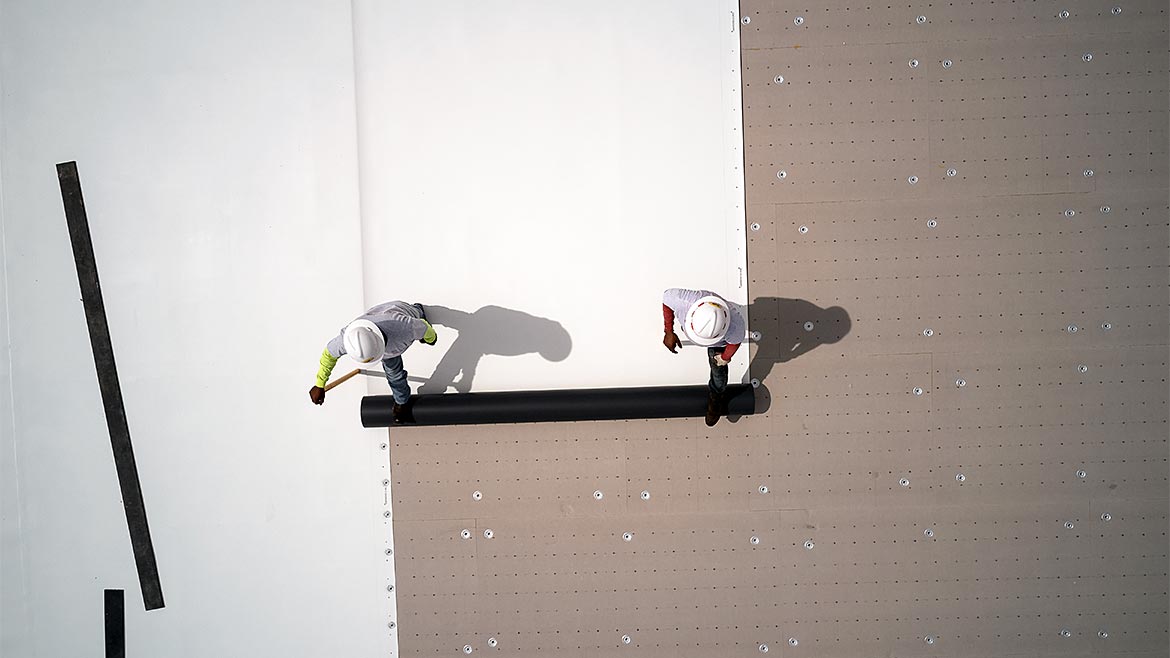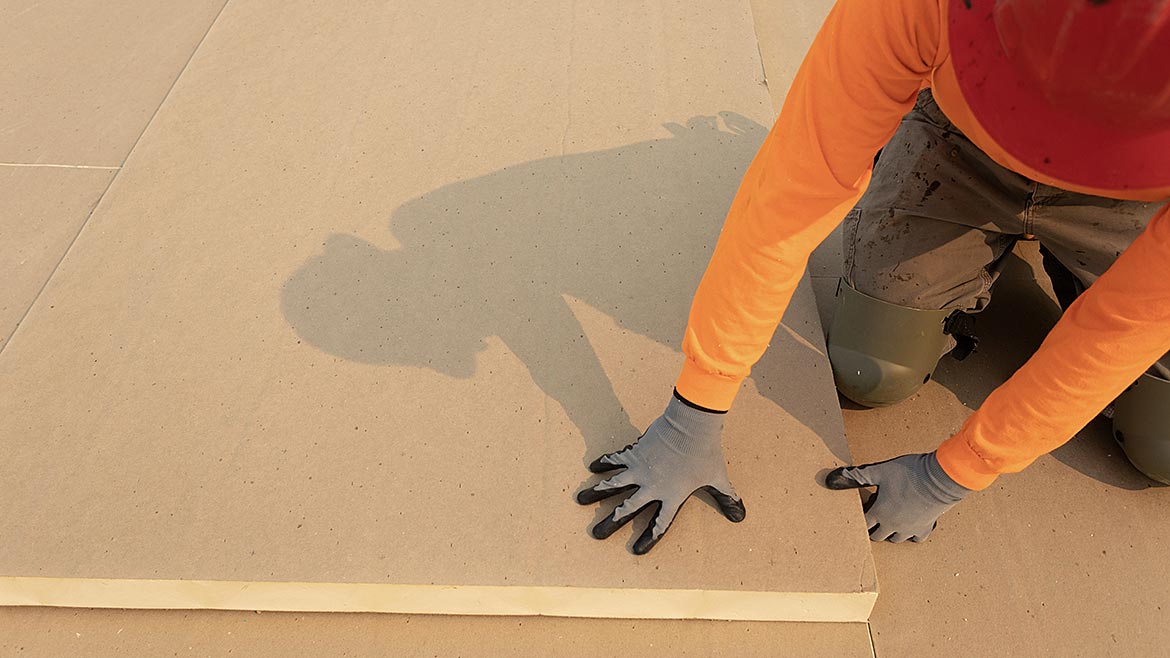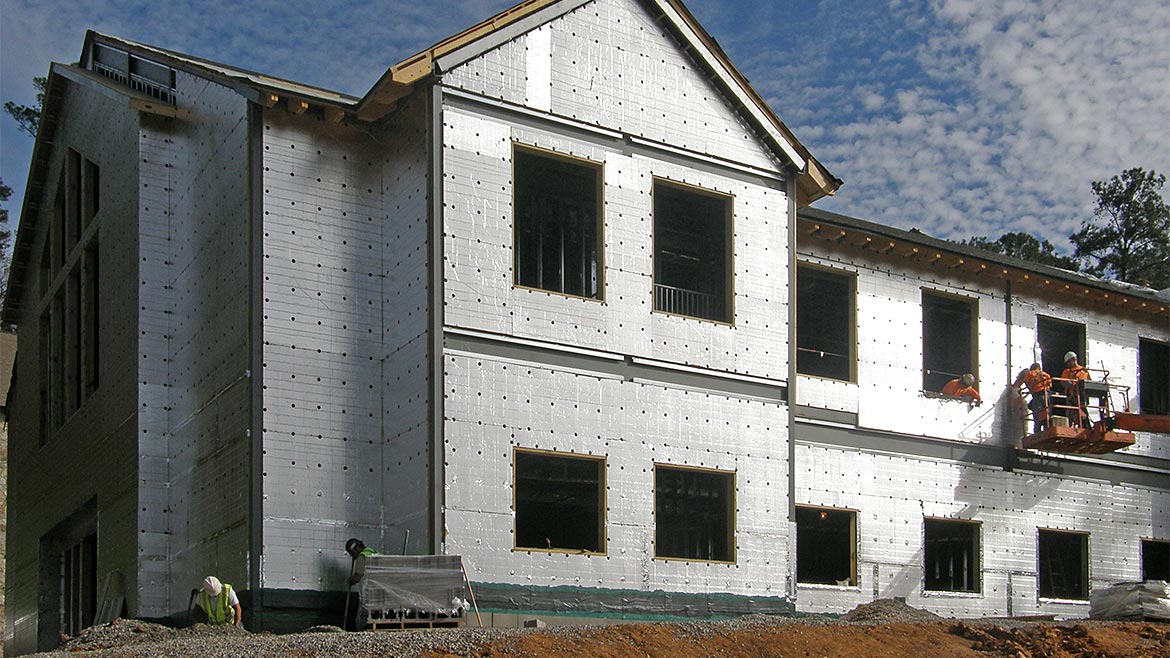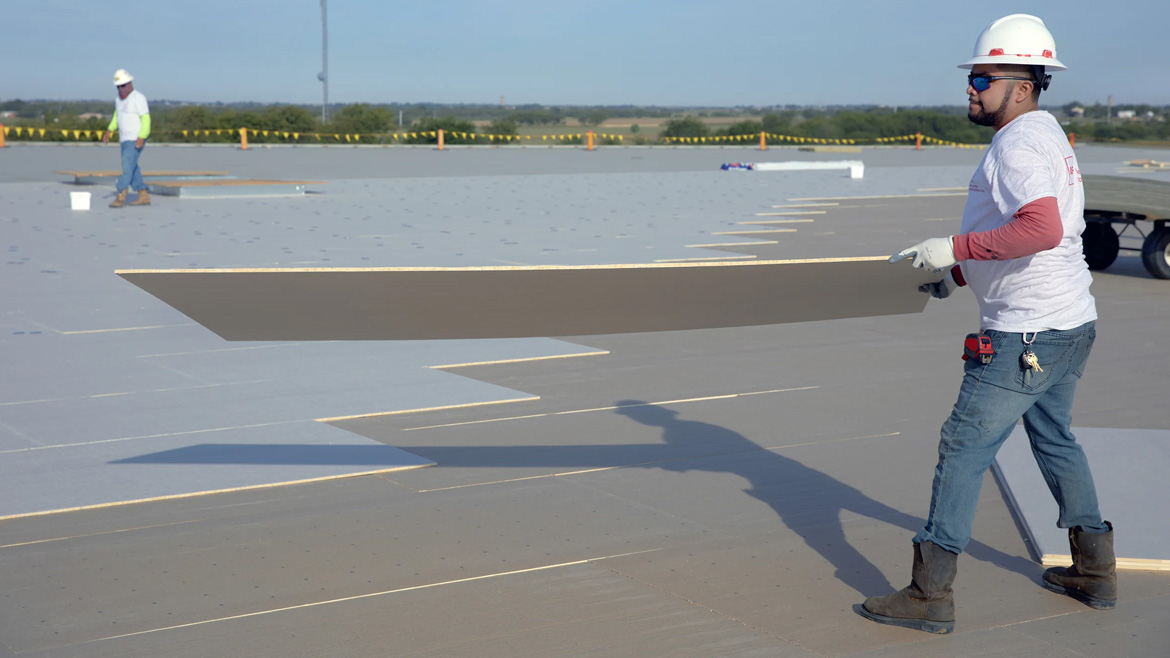Heating and cooling account for over half of a household’s energy use and over one-third of energy consumption in commercial structures, according to a survey conducted by the U.S. Energy Information Administration. These survey results, in combination with pressing issues such as rising energy costs and climate change, are giving momentum to the global conversation around energy conservation.
In turn, today’s building and design professionals are tasked with supporting energy-efficient design, construction and operations. To meet this responsibility, many are closely examining the building envelope for opportunities to decrease energy loads before considering other technology options like equipment, appliances or renewables. As the physical and thermal barrier between external environments and internal conditioned spaces, the building envelope has a close relationship with energy transfer and consumption.




Polyiso CI Performs Critical Functions in High-Performance Envelopes
In addressing building envelope performance, one way to keep heat transfer to a minimum is with polyiso continuous insulation. In application, polyiso CI is a high-performance insulation solution that delivers one of the highest R-values per inch compared to other insulating options. Its versatility, thermal performance and proven water resistance make it widely used in residential and commercial construction for walls, roofs and foundations. When used for exterior walls, its high-performance qualities help reduce thermal bridging while providing an effective drainage plane that can reduce the complexity in wall designs. Polyiso CI can be employed in a variety of structural wall systems and with a wide range of cladding materials (brick veneer, MCM panels, vinyl siding and more) to significantly increase the overall energy efficiency of a structure.
Delivers Continuous Insulation and Minimizes Thermal Bridging
Traditional construction practices place insulation between the wall framing members (wood or steel studs, commonly), which creates individual bridges for heat transfer between indoor and outdoor spaces. To mitigate this problem, polyiso CI insulates the entire opaque exterior of framed walls to reduce energy losses and gains due to thermal bridging. Not only does polyiso CI work to reduce thermal bridging, but the system also packs more energy savings into a thinner profile. This results in thinner walls, creating more usable floor area within the footprint of the structure.
Depending on the required opaque wall assembly minimum R-value (or maximum U-factor), climate zone and thickness of product used, the continuous insulation system can help industry professionals meet energy code requirements without the need for additional cavity insulation. As a result, contractors can reduce associated labor and material costs to optimize limited project resources.
Provides Air and Water Barrier Performance
The amount of energy needed to heat or cool a home or building is typically affected by several different variables. However, air leakage is one of the leading culprits for energy loss. In fact, the U.S. Environmental Protection Agency’s Energy Star program estimates that air leakage accounts for between 25 and 40 percent of the energy used for heating and cooling in a typical residence. With proper consideration of climate-dependent code requirements, properly sealed or taped polyiso CI can be used as an air barrier to reduce air infiltration and exfiltration. In fact, the model building codes list polyiso CI as an effective air barrier material when installed at a minimum 1/2 inch thickness.
When used in this application, polyiso CI can also minimize the risk of bulk water intrusion and condensation by keeping the wall structure above the dew-point temperature. For example, in cold climates when air exfiltration is present, indoor air may be transported into the wall and cause condensation to occur at locations below the dew-point temperature. Condensation typically occurs on the interior-facing surface of the exterior sheathing. The same phenomenon may take place in hot-humid climates in the presence of air infiltration, except the condensing plane is typically on the outer-facing surface of the exterior sheathing material. By keeping the wall structure above the dew-point temperature, polyiso CI can increase the overall performance of the wall; reducing heat losses and heat gains while minimizing the risk of moisture accumulation and other associated hazards, such as mold growth.
Continuous Insulation Systems Hold the Keys to Prioritizing Energy Performance
Polyiso CI is a proven solution for building and design professionals looking to crack the energy efficiency code and improve the overall service life of wall assemblies. In application, polyiso’s inherently water-resistant core reduces air leakage and moisture absorption while achieving a high R-value in a thin profile. Durable and versatile facer options like foil or coated glass facers further enhance the system’s high-performance qualities. For this reason, polyiso CI can be used on exterior framing to support long-term energy savings and occupant comfort year-round. Beyond exterior walls, polyiso CI can also deliver proven performance to roofs (as part of the roof plane over sloped solid wood and metal decks) and below-grade foundation and slab applications.
As national, state and local energy codes continue to place a greater emphasis on energy conservation, contractors and designers can turn to continuous insulation strategies to enhance the overall energy performance of structures, as compared to traditional cavity insulation-only options. In turn, they can reap greater project cost-savings on labor and materials while prioritizing energy efficiency for the future owner or occupant.
To learn more about the benefits of polyiso CI for residential and commercial walls, visit polyiso.org/page/ContinuousInsulation.






Report Abusive Comment